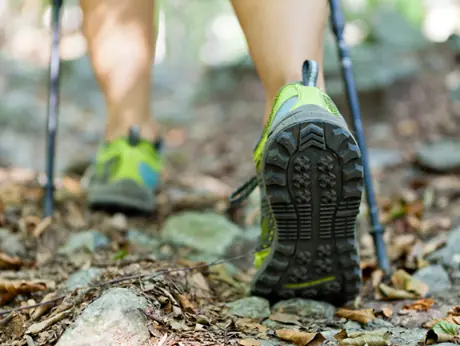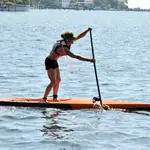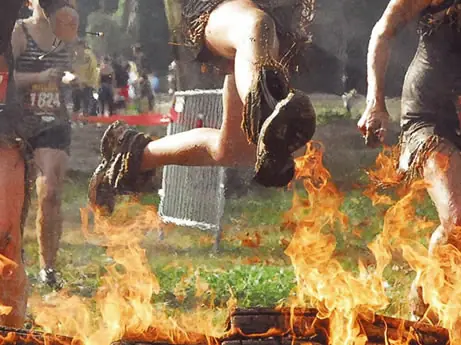
They're virtually unbreakable, they make snow-covered, winter terrain that would be otherwise inaccessible, easier to traverse, it's a great way to torch some calories and can get your heart pumping harder than you can on a run—or even a trail run.
With outdoor technology advancing by the month, snowshoe models are more user-friendly and easier to use than ever. Gone are the days that pioneers needed to attach what looked like large, wooden tennis rackets on their feet—or even the days that outdoors enthusiasts needed to sit on the cold earth for 45 minutes fiddling with straps and buckles. Now, with some models of snowshoes, minor adjustments are simple.
So will any snowshoe do? Not necessarily. The length of your snowshoe depends on your weight. Then, it's important to consider what you'll be using snowshoes for and your needs. Here are some things to think about:
Snowshoes for Runners
If you're a runner, you know that snowshoe-running all winter is an excellent way to cross-train, gain more strength and endurance, and stay ultra-fit. You can potentially burn more than 45 percent more calories than walking or running at the same speed and snow-covered terrain provides resistance for building strength and toning muscles.
So if you're looking to use snowshoeing specifically as cross-training and an alternative to running, you're most likely going to want aerobic/fitness snowshoes. They can be more durable yet flexible than most models, designed for wear and tear, sleek, light and compact.
They aren't designed for deep snow or major inclines—just for you to put in your winter miles.
Recreational Hiking
These are the most basic snowshoe models you're bound to find. They're up-to-date and sophisticated in technology, but they're all-around snowshoes—mostly meant for simple hiking (nothing too steep or crazy).
Though they tend to be a little bigger and more "floaty" than fitness snowshoes, they'll get you to places you otherwise may not be able to hike to and are your means to enjoying the great outdoors.
Snowshoes for Skiers and Snowboarders
For skiers and snowboarders who don't like crowded runs and spend a lot of time searching for untouched peaks, some types of snowshoes are now boot-compatible. They're perfect for making those hikes in the backcountry shorter and the means to your adrenalin rush more accessible.
But your choice will depend on your skiing, snowboarding and climbing experience. Snowshoes with strap fixings work great with snowboard boots and hard ski boots work better with snowshoes that have mountaineering bindings.
If you're after deep powder, you may want a larger snowshoe with more flotation. But, on the other hand, steeper slopes that may be icy could call for snowshoes that take crampons (which will bite into and hold onto the hard surface). Take the time to assess what kind of skiing or riding you usually do and what types of inclines, for the most part, you're going to be tackling.
Christina Scannapiego is the Outdoors editor for Active.com.
Get ACTIVE on the Go


Couch to 5K®
The best way to get new runners off the couch and across the finish line of their first 5K.
Available for iOS | Android







Discuss This Article